Abstract
Six dichloro-, 3 trichloro-, 2 triiodo-, and 3 heterosubstituted benzoic acids (amiben, dinoben, dicamba), and N-1-naphthylphthalamic acid have been tested for effects on growth and on polar auxin transport. Growth activity with and without kinetin was measured by effects on fresh and dry weights of 30-day cultures of fresh tobacco pith. Transport inhibition was measured by following uptake and output of IAA-2-14C through 10 mm bean epicotyl sections. The distribution of callus growth on vascularized tobacco stem segments was also observed. Avena first internode extension assays established the relative activities: dicamba > amiben > dinoben suggested by pith growth results. Growth effects of active compounds were similar with and without kinetin, except that amiben was less active with kinetin, while 2,3,6-trichlorobenzoic acid was more active with kinetin than alone. The weak auxin activity of NPA was confirmed. Transport experiments showed that NPA was the most inhibitory compound tested, followed by TIBA. Other compounds tested were at least 300 times less inhibitory to IAA transport. The best growth promoters were the least inhibitory to transport, and the most effective transport inhibitors were at best poor auxins. It is suggested that the weak auxin and auxin synergistic activity of TIBA (and perhaps 2,3-dichlorobenzoic acid) in extension growth tests arises from its inhibition of transport of endogenous or added auxin out of the sections, rather than from its intrinsic auxin activity. Chemically induced apolar callus growth on vascularized tobacco stem explants can arise from inhibition of native auxin transport, apolar growth stimulation by auxinic action of the test compound, or both.
Full text
PDF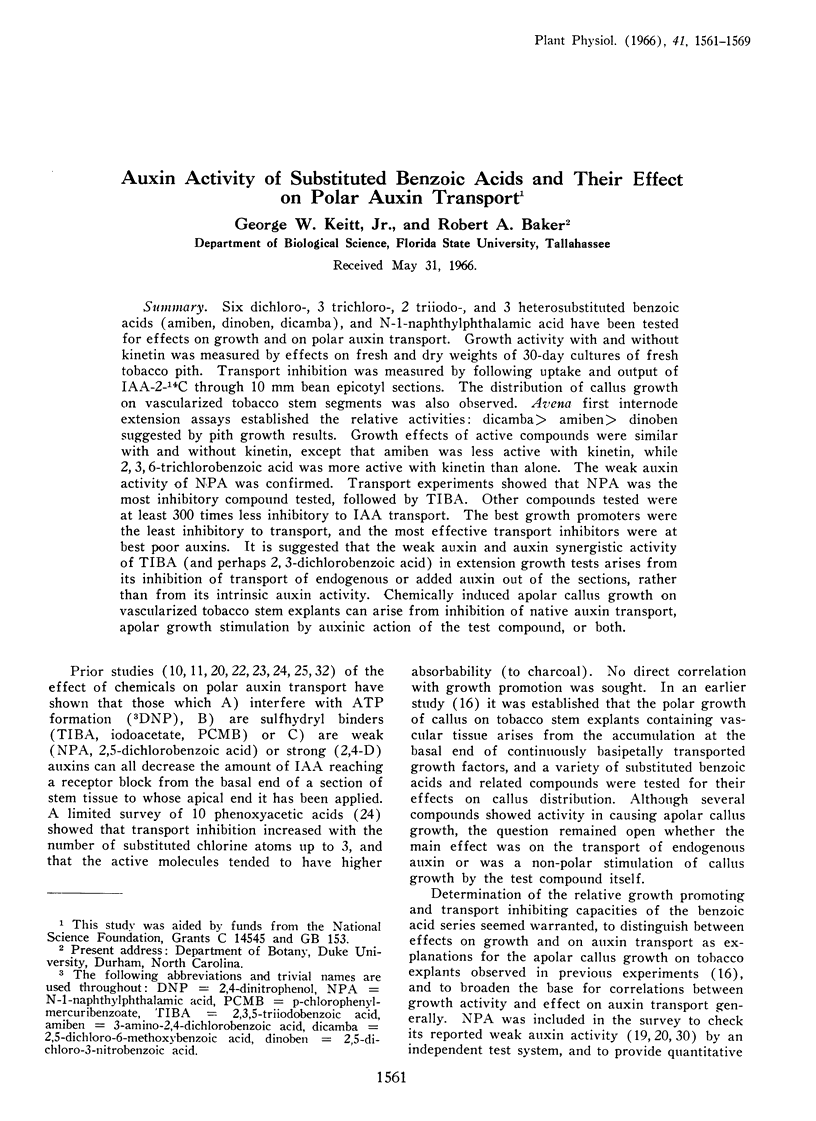
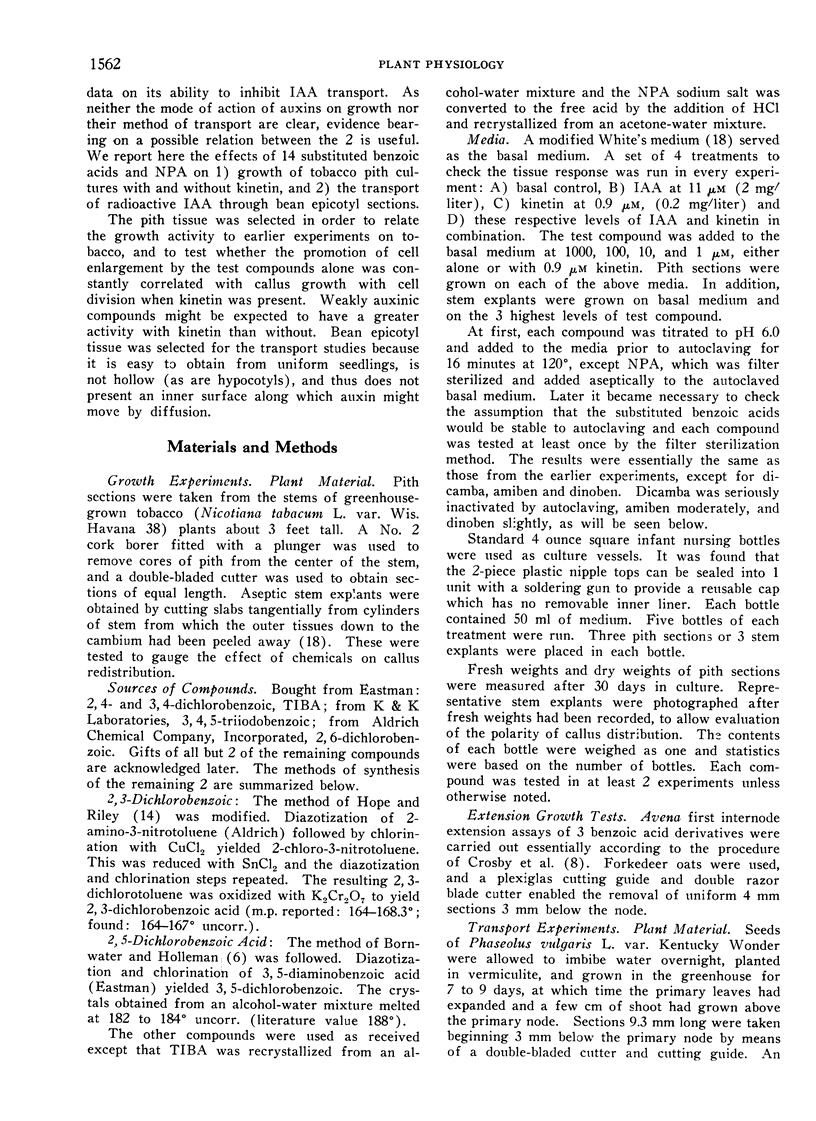
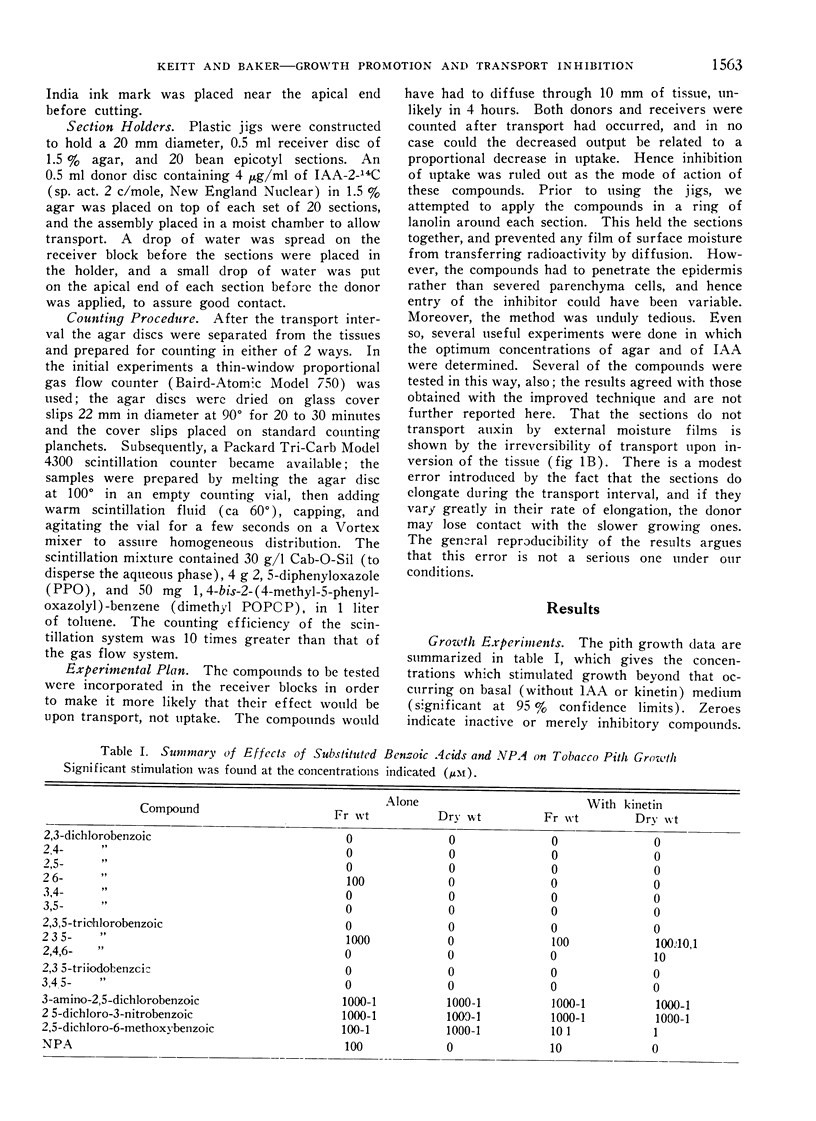
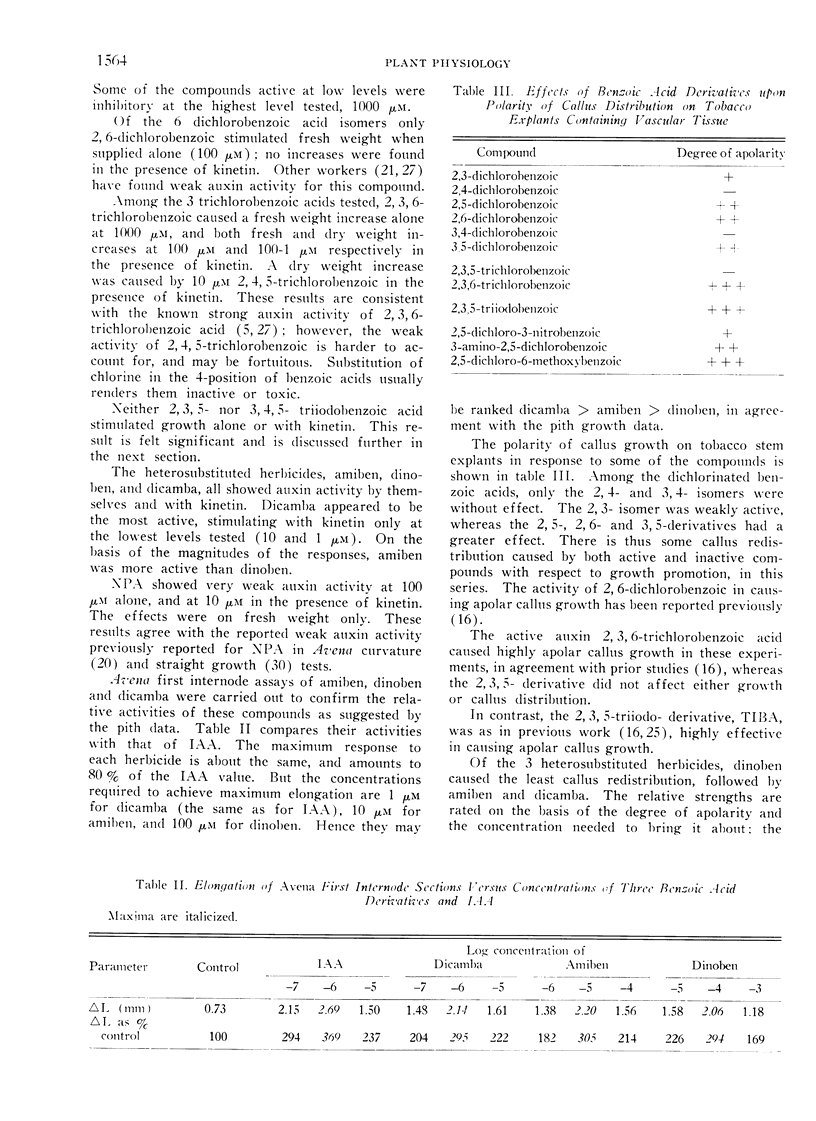
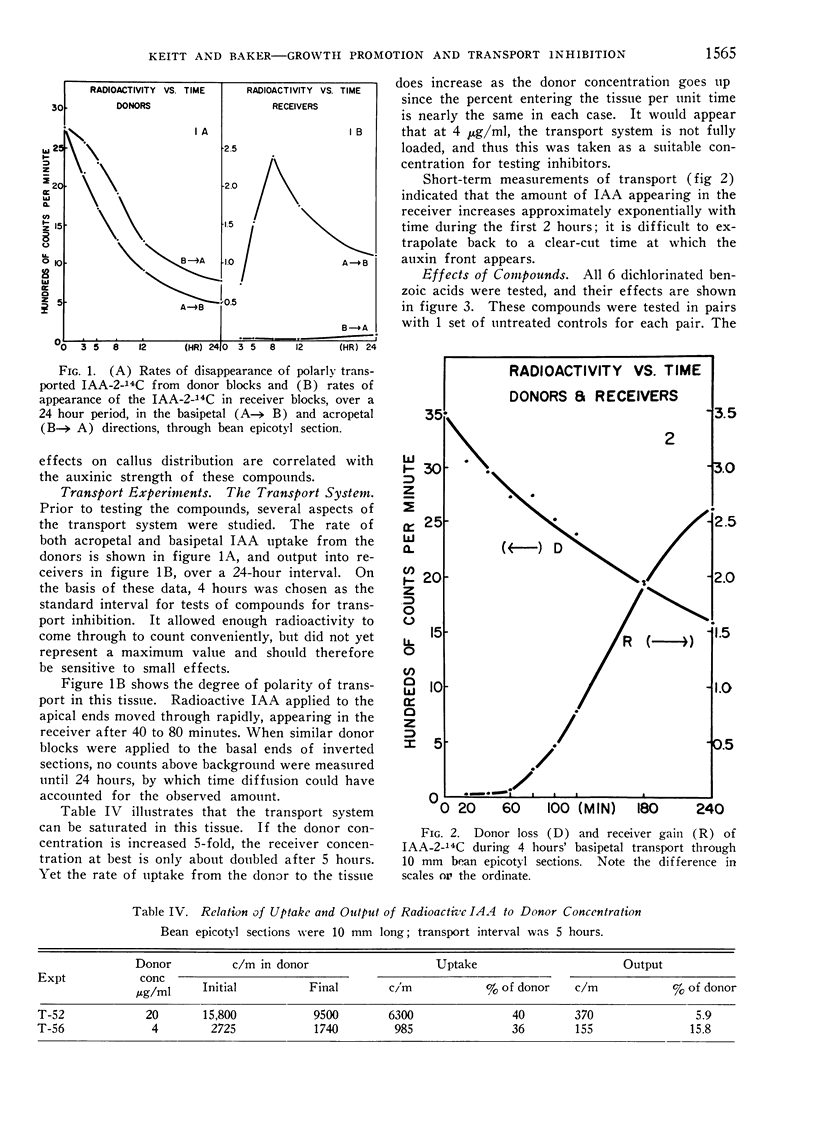
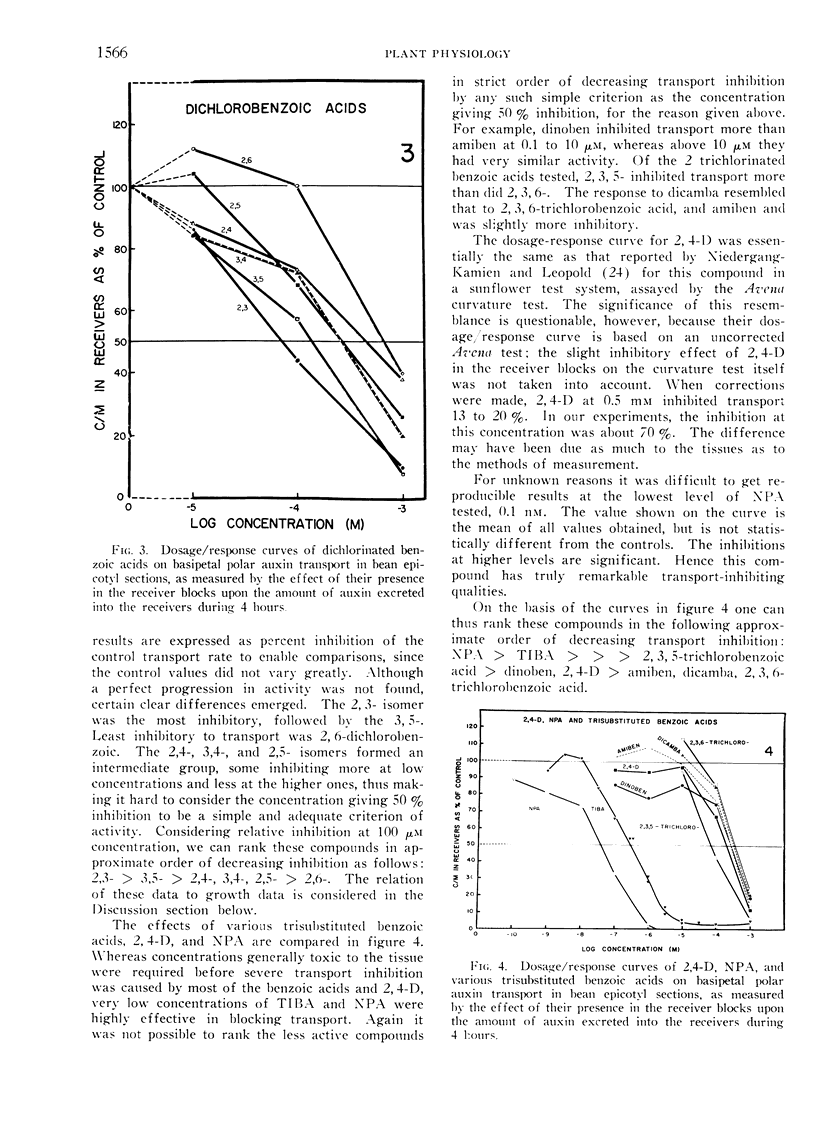
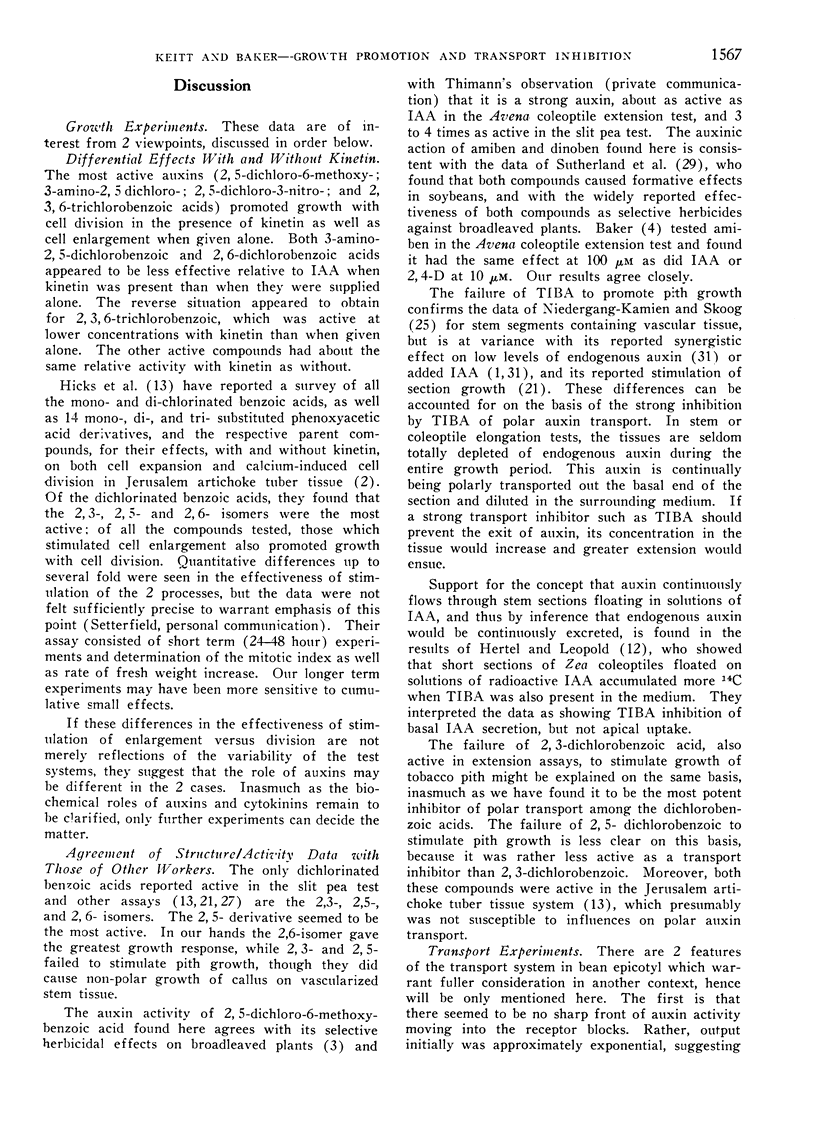
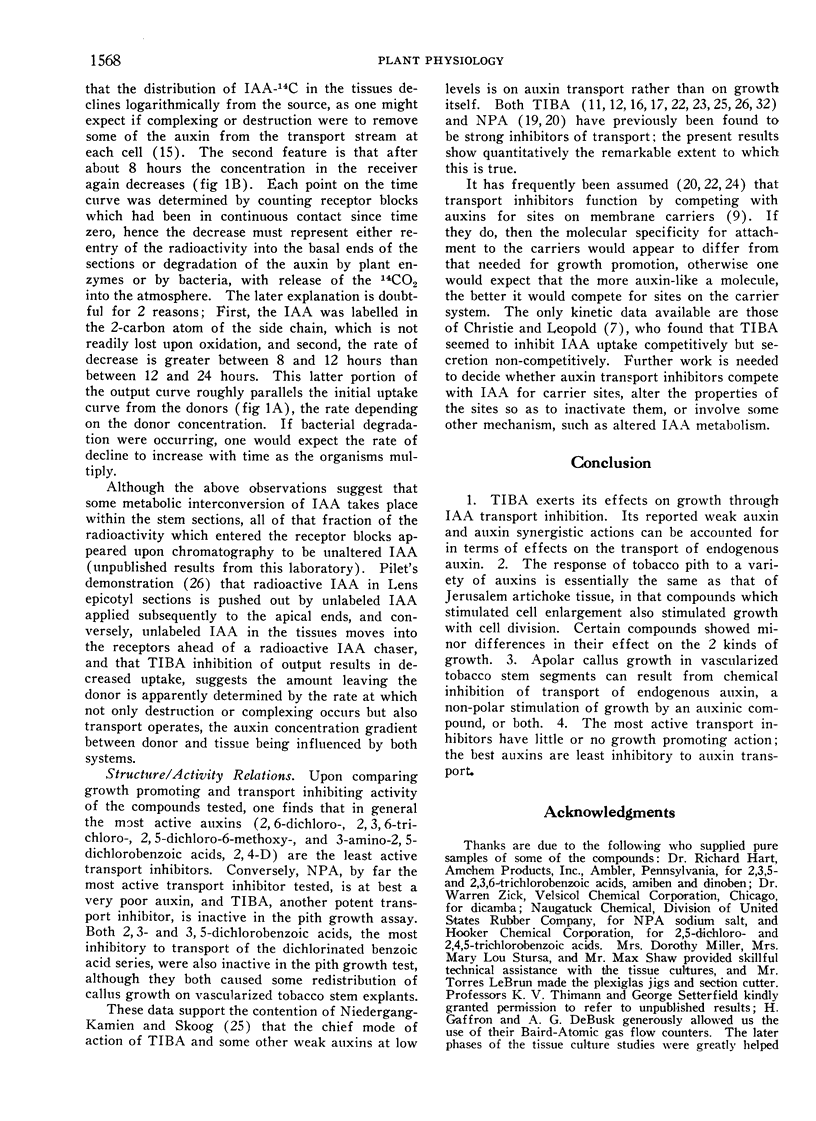
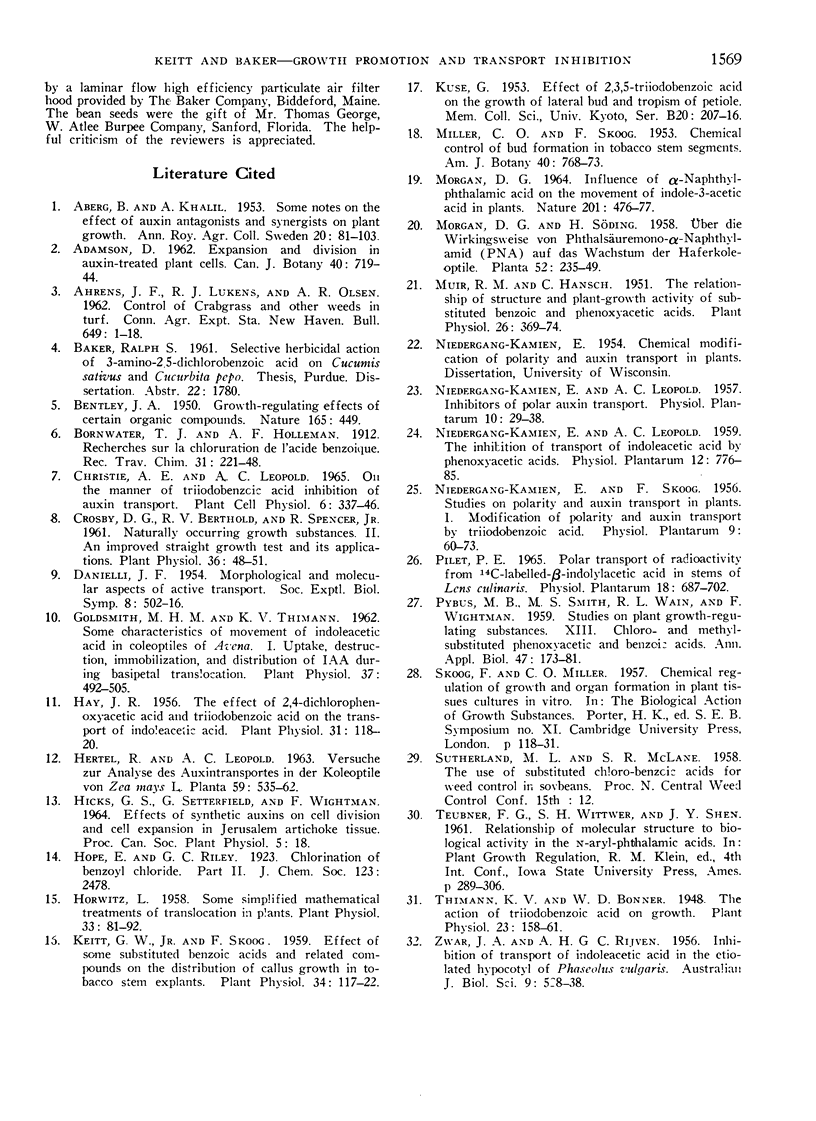
Selected References
These references are in PubMed. This may not be the complete list of references from this article.
- Crosby D. G., Berthold R. V., Spencer R. Naturally occurring growth substances. II. An improved straight growth test & its applications. Plant Physiol. 1961 Jan;36(1):48–51. doi: 10.1104/pp.36.1.48. [DOI] [PMC free article] [PubMed] [Google Scholar]
- Hay J. R. The Effect of 2,4-Dichlorophenoxyacetic Acid and 2,3,5-Triiodobenzoic Acid on the Transport of Indoleacetic Acid. Plant Physiol. 1956 Mar;31(2):118–120. doi: 10.1104/pp.31.2.118. [DOI] [PMC free article] [PubMed] [Google Scholar]
- Helen M., Goldsmith M., Thimann K. V. Some Characteristics of Movement of Indoleacetic Acid in Coleoptiles of Avena. I. Uptake, Destruction, Immobilization, & Distribution of IAA During Basipetal Translocation. Plant Physiol. 1962 Jul;37(4):492–505. doi: 10.1104/pp.37.4.492. [DOI] [PMC free article] [PubMed] [Google Scholar]
- Horwitz L. Some Simplified Mathematical Treatments of Translocation in Plants. Plant Physiol. 1958 Mar;33(2):81–93. doi: 10.1104/pp.33.2.81. [DOI] [PMC free article] [PubMed] [Google Scholar]
- Keitt G. W., Skoog F. Effect of Some Substituted Benzoic Acids and Related Compounds on the Distribution of Callus Growth in Tobacco Stem Explants. Plant Physiol. 1959 Mar;34(2):117–122. doi: 10.1104/pp.34.2.117. [DOI] [PMC free article] [PubMed] [Google Scholar]
- MORGAN D. G. INFLUENCE OF ALPHA-NAPHTHYLPHTHALAMIC ACID ON THE MOVEMENT OF INDOLYL-3-ACETIC ACID IN PLANTS. Nature. 1964 Feb 1;201:476–477. doi: 10.1038/201476a0. [DOI] [PubMed] [Google Scholar]
- Muir R. M., Hansch C. THE RELATIONSHIP OF STRUCTURE AND PLANT-GROWTH ACTIVITY OF SUBSTITUTED BENZOIC AND PHENOXYACETIC ACIDS. Plant Physiol. 1951 Apr;26(2):369–374. doi: 10.1104/pp.26.2.369. [DOI] [PMC free article] [PubMed] [Google Scholar]
- Thimann K. V., Bonner W. D. THE ACTION OF TRI-IODOBENZOIC ACID ON GROWTH. Plant Physiol. 1948 Jan;23(1):158–161. doi: 10.1104/pp.23.1.158. [DOI] [PMC free article] [PubMed] [Google Scholar]


